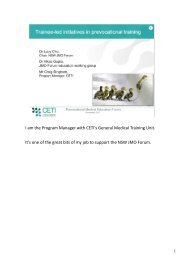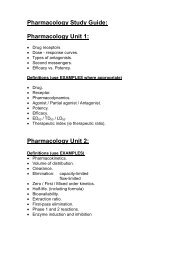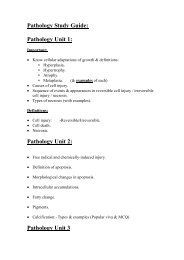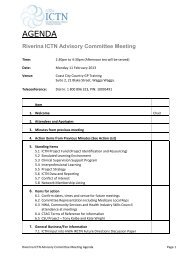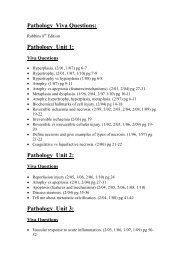a handbook for supervising allied health professionals - HETI - NSW ...
a handbook for supervising allied health professionals - HETI - NSW ...
a handbook for supervising allied health professionals - HETI - NSW ...
Create successful ePaper yourself
Turn your PDF publications into a flip-book with our unique Google optimized e-Paper software.
Skills training can begin with virtual experience (eg, texts, scripts, videos, online tutorials,<br />
simulations, role plays) but it has to be completed in the workplace with real patients.<br />
Supervisors need to be ready to teach a skill when the opportunity arises.<br />
A four-step approach to teaching skills described by Walker and Peyton (1998) and<br />
adopted in Teaching on the Run (Lake & Ryan 2006), is:<br />
1 Demonstration: Trainer demonstrates the skill at normal speed, without<br />
commentary.<br />
2 Deconstruction: Trainer demonstrates the skill while describing the steps required.<br />
3 Comprehension: Trainer demonstrates the skill while the staff member describes<br />
steps required.<br />
4 Per<strong>for</strong>mance: The staff member demonstrates the skill and describes steps while<br />
being observed by the trainer.<br />
Tips <strong>for</strong> teaching clinical skills<br />
• Don’t <strong>for</strong>get fundamentals: hygiene and infection control; patient communication,<br />
consent and introductions.<br />
• Demonstration: make sure the learner can clearly see what you are doing.<br />
Demonstration by the supervisor can be combined with per<strong>for</strong>mance by the learner.<br />
• Integrate theory with practice: that is, not only demonstrating skills but explaining the<br />
logic and the evidence behind the practice. This helps to develop clinical reasoning.<br />
• Don’t teach everything at once: particularly <strong>for</strong> the demonstration of more complex<br />
skills or procedures, not every step needs to be taught in every encounter. Begin by<br />
establishing what the staff member already knows. Review the unknown steps in more<br />
detail.<br />
• Provide opportunities to practice skills: making time and space available <strong>for</strong> the<br />
staff member to be hands-on, breaking procedures into steps, providing direction and<br />
sharing care. Repetition is the key to skills training, with the focus of teaching building<br />
on competency.<br />
• Use collaborative problem solving: give staff a clinical problem and work with them<br />
towards a solution.<br />
• Give feedback: that is timely, specific, and constructive. Ensure feedback is given in<br />
an appropriate environment. Good givers of feedback also invite feedback from the<br />
staff member, with a view to improving their teaching technique.<br />
• Provide appropriate learning resources: knowing what is available to help staff<br />
develop a deeper level of understanding.<br />
SECOND EDITION<br />
Teaching clinical skills<br />
<strong>HETI</strong><br />
THE SUPERGUIDE<br />
53



